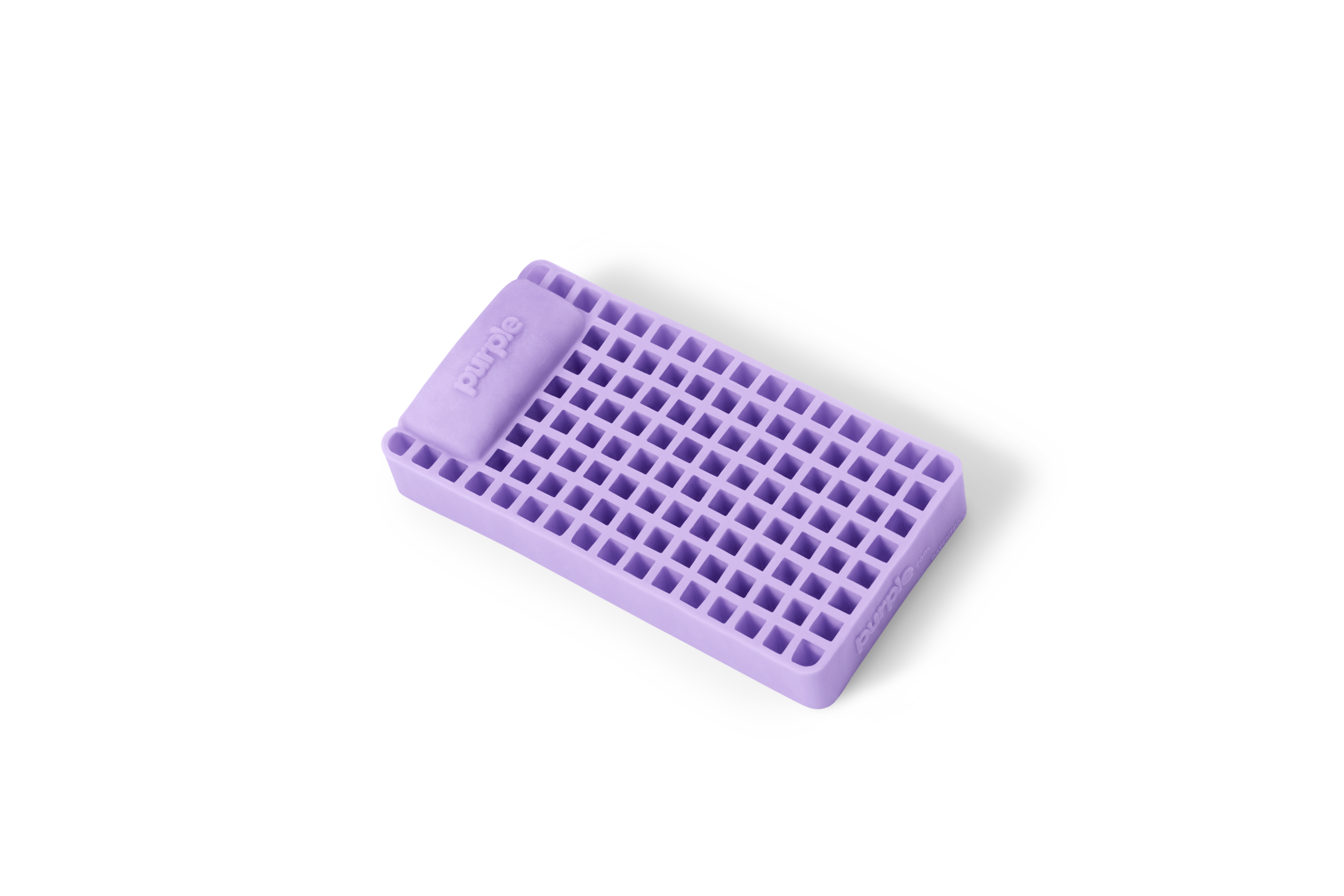Purple probably has the best commercials of any mattress brand. Flashy ad spots keep you alert, but a great mattress should put you right out. We wanted to find out if Purple lives up to the hype it has created for itself on the back of its proprietary grid technology. Purple mattresses may have the “it” factor in ads but does it correlate to a great night’s sleep?
Pros and cons
Pros
- Comes in a bag, which is easier for hauling up a flight of stairs
- Purple grid is immediately welcoming to any sleep position
- Affordable
- Sleeps “cool” — great for hot sleepers
Cons
- We like the bag, but cardboard is recyclable
- A bit softer than some testers like
- Edge support isn’t great
- May not be great for stomach sleepers
Delivery and setup
You know the drill by now: mattresses arrive tightly coiled in a box or bag; you haul them to the bed frame; unwrap the package; the mattress unfurls; you wait a few hours to let it breathe its noxious gasses out; make the bed; get some rest.
Purple is no different than others in this regard, though we do like that Purple mattresses arrive in a bag rather than a box. We don’t like that the bag is not recyclable. Say what you like about hauling cumbersome boxes upstairs or through your home, at least you can recycle cardboard.
A big plus? Purple uses CertiPUR-US certified foams so the off-gassing is less noxious than any other brand of mattress we’ve tested.
What’s the Purple mattress made of?
Beneath its breathable cover, Purple has several layers of… stuff.
There’s a supportive foam layer at the base and a medium-density foam layer atop the base. The grid comes next, and it’s supported on the edges by firmer, solid foam support.
The Purple Plus has an extra layer of comfort foam in the middle, which Purple claims gives it a more “medium” feel (the Purple mattress without the extra layer of foam is described as “medium-firm”). Purple Plus is the model we tested.

How does the Purple mattress feel?
The grid makes itself known when you first touch the mattress top. It’s distinctive and unique.
Lay down on a Purple mattress and you’ll again notice just how distinct the grid is. I’m 6’2” and weigh around 195lbs. I found the grid supportive. Some reviews caution heavier sleepers (230 pounds seems to be the threshold) may find Purple a bit unsupportive. I’ll note this is subjective, and there’s nothing official on the Purple website noting a weight limit.
One thing I can agree with other reviews on is the Purple may not be great for stomach sleepers. I’m a side sleeper and had no issues with comfort when laying on the Purple mattress. Laying on my stomach I noticed the Purple was less comfy and supportive.
This seems to distill to the grid. Purple’s grid technology is a softer top layer than most mattresses have and was designed to support pressure points like your hips. If your hip area is face down, the grid will naturally cause strain in your back. It’s just how bodies work!
Ditch the pillow and the Purple mattress was fine for face-down napping. The grid is still a touch soft for my liking when laying face-down. If you’re a stomach sleeper, I suggest heading to a Purple showroom to test one for yourself.
Edge support could be better. Sitting on the edge of the bed, you’ll sink down a bit. If you share your bed with someone, edge support matters. The Purple mattress edges are fine for sleeping support, just not great for sitting on.
Is the Purple mattress comfortable to sleep on?
The concept behind Purple is the grid envelops you and makes you feel as though you’re floating. Sounds ambitious, but it’s also kind of true.
I really enjoy the Purple’s heat distribution. The grid doesn’t trap heat, and though we’re in the cold winter months, I still sleep hot. Big thumbs up.
As a side sleeper, the Purple grid was great. I felt supported. The grid is as responsive as it’s billed, too. When I turn over at night, I wake up, and getting back to sleep can be difficult at times. The Purple grid made me feel immediately comfortable in my new position, which really meant I fell back to sleep faster.
Where some may find fault is the firmness of Purple Plus mattresses. I think it could have been a touch firmer. It’s comfortable, but I worry about long-term wear and support with softer mattresses like Purple Plus. (The company does have firmer models, such as the Purple Hybrid, if this is a concern for you.)
The underlying support layers also help isolate movement, so Purple is great for those who share a bed with a partner or pet.
Final verdict: Buy it
The grid is what makes or breaks a Purple mattress. While we (naturally) have concerns about Purple mattresses, there are no deal-breakers.
Durability may be better over time thanks to the grid. Your body isn’t stressing memory foam, and the grid seems to be far more resilient than the memory foam we’ve tested in the past. Our concerns about the bed getting softer over time may also be for naught with the grid’s apparent resilience.
I loved that Purple lets me sleep cool, and my nocturnal tossing and turning movements didn’t cause me to lay awake. Huge plus there as well.
Where we’ll caution pragmatism is for those who are heavier or sleep on their stomach. This doesn’t mean you should write Purple off – just find a showroom near you and camp out on a Purple mattress for a bit. Keep in mind Purple has a 100-night return policy, so you can also give it time at home to see if you like it.
Look, I have no idea how to market a mattress, but the grid struck me as more gimmick than good before I tested it. Having given Purple a shot, my final verdict is the grid is great. Supportive yet soft, cooling and calming, Purple’s grid is everything I wanted it to be.




